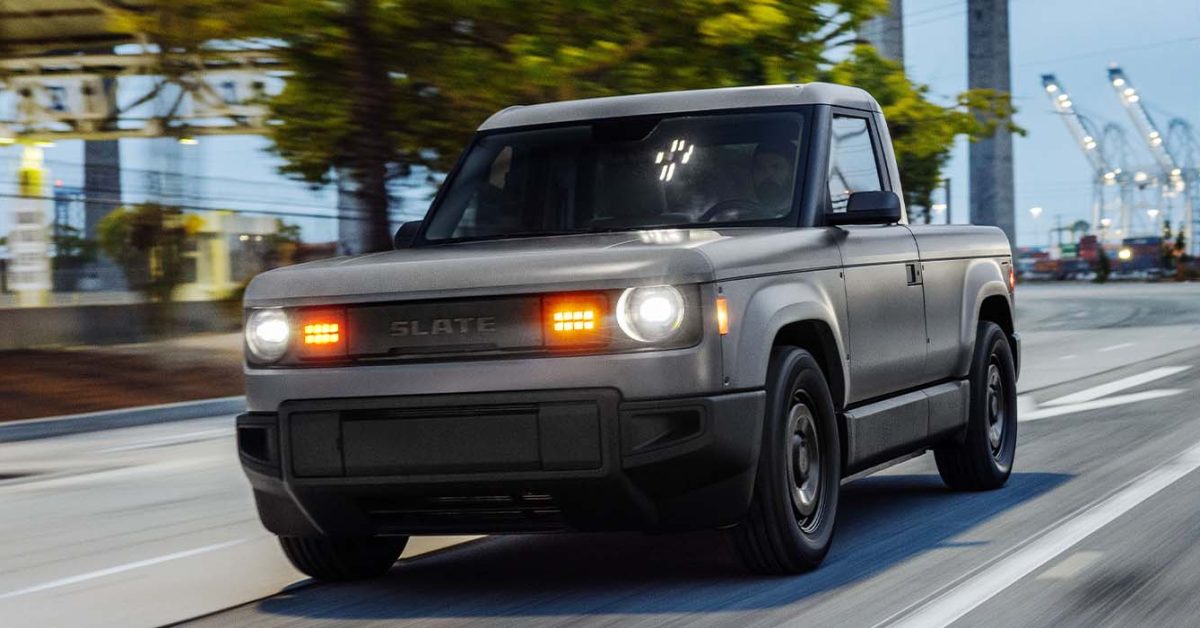Range
- Small battery range: 240km
- Big battery range: 385km
Motor
- Motor: Single motor, rear wheel drive
- Power: 150kW
- Torque: 264Nm
- 0-100km: 8s
- Top speed: 145km/h
Dimensions
- Bed length: 1.5m
- Vehicle length: 4.4m
- Vehicle height: 1.8m
- Vehicle width: 1.8m
Comparison
- 2025 Kia Niro length: 4.4m
- 2025 Ford Maverick length: 5.1m
- 1985 Toyota Pickup/Hilux length: 4.7m
Weights
- Curb weight 1634kg
- Max payload 650kg
- Max towing 454kg
Charging
- Port: NACS
- Onboard charger: 11kW
- Level 1 AC, 3.6kw, 20-100%: 11h
- Level 2 AC, 11kW, 20-100%: under 5h
- Level 3 DC, 120kW, 20-80%: under 30m
Safety
- Traction Control
- Electronic Stability Control
- Forward Collision Warning
- Automatic Emergency Braking
- 2-stage Driver/Passenger Airbags
- Full Length Side Curtain Airbags (Truck 2) (SUV 4)
- Seat Side Airbags (2)
- Backup Camera
- Pedestrian Identification
- Auto High Beam
More info



I don’t think that tractors will ever go the way of the dodo and when you have proper logistics, say a reasonably dense S-Bahn type rail network that can also handle shipping individual containers, a tractor and a trailer is all you need as you only have to haul to the next logistics hub and there’s no truck load even 100 year old tractors can’t tow: When you can pull a plough through soil torque isn’t something you need to worry about, 20 horses at 5km/h go vroom. 20 horses! Do you know how much those eat.
It’s hard to guess the future, but I imagine once we have automated farming, things like tractors will look a lot different. Right now, farmers need versatile equipment for a variety of tasks (plow, till, plant, etc), whereas an automated farm would probably prefer dedicated machines for each. The farmer would become more of a mechanic/planner than the one directly running the equipment.
I don’t know how far out that is, but I imagine once we get reasonable self-driving cars, farming will be the next up.
Modern tractors already self-drive on the field, fertiliser is applied in tightly controlled doses based on aerial analysis, that future is already there. You don’t plant or fertilise at the same time as you plough so it makes sense for those things being attachments, not integrated machines. The reason combine harvesters are dedicated machines is because they do so much in one go it doesn’t fit into a (sensibly sized) attachment.
You could also have drones distribute that fertiliser but you can’t work the soil with them, and you already have a tractor to work the soil with so you can just as well use it to apply the fertiliser. There’s also tons of odd lifting and transporting jobs on farms, that’s why there’s forklift attachments. You’ll need something with torque, low ground pressure, PTO and attachment points and well that’s a tractor.
My understanding is that the current design is merely an evolution of regular human-controlled machines, and they still need to be able to operate w/ a human inside. Once you remove the human from the equation, the design space opens up quite a bit, and you optimize for different things. Since things would likely be battery powered, maybe you’d want more, smaller devices so they don’t take as long to charge.
I don’t know, I’m not a farmer. My point, however, is that once we trust machines to operate w/o humans in control, things are likely to change a lot.
Gotta say, this should be a huge red flag for everyone. Soil quality is declining sharply, and fertilizers simply aren’t making up the difference. Switching to robots farming will almost certainly accelerate this.
Under solutions, there, is written “compost” and “animal manure”. That’s fertiliser. Import-dependent agriculture is a whole another topic and I didn’t want to get into it, but long story short, no matter how good and natural your soil management is you can’t expect to export nutrients all the time and not develop a shortage. You can pull nitrogen out of the air, that’s nice, but you can’t do that with phosphate and minerals in general. Good news is that good water treatment plants will pull phosphate out of the waste water.
Unfortunately most commercial farms aren’t putting in what they’re taking out, even with the industrial fertilizers. Most of the industrial fertilizers are just nitrogen, potassium, and phosphates, often as a liquid. You are absolutely right that you can’t take and never return; that’s why in pre-industrial revolution times, people would rotate fields between crops, and lying fallow/being used for grazing (where sheep, cattle, etc. were leaving free fertilizer) You also ended up with fewer years where all your crops got wiped out by a single pest, because you weren’t farming just one thing. Efficiency in farming–esp. monoculture–is great for profits, not so great for the land itself.
Eh. High levels of phosphates end up running off fields into waterways, and then you get things like algae blooms. Waste water treatment plants will clean up runoff that goes into the sewers and storm drains, but it’s not really cleaning up entire rivers. IIRC, that used to be a much more significant problem; I remember water in rivers near where I grew up–which was all surrounded by farms–often had white, sludgy scum anywhere that the current was forming eddies. If I remember correctly the high levels of that white shit was due to worse regulations governing agricultural run-off.
Yep systems that could automatically dose the fertiliser were not yet in widespread use. Farmers don’t want to over-fertilise for the simple reason that fertiliser costs money but before those systems were available it was all too easy to say “fuck it I’ll drown the field so that there’s enough everywhere”.
Not rotating crops seems to be a US thing, farmers over here never stopped doing that. There’s also EU-wide laws about having to either let land fall fallow, or plant cover crops or nitrogen fixers. You can, in principle, plant your nitrogen fixers year after year on one field and your cash crops on another, but only if you’re a complete idiot.